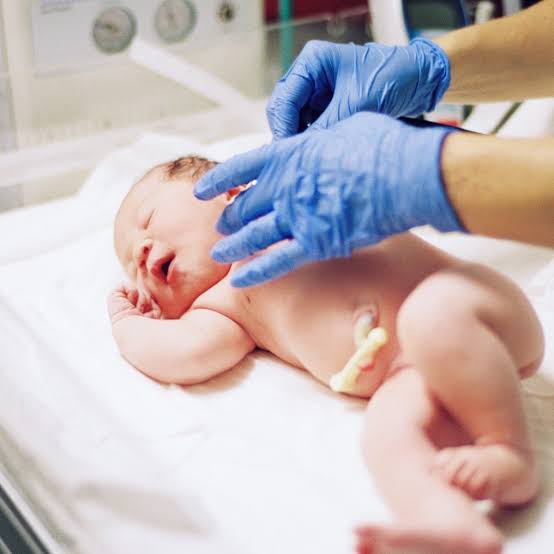Midwife Job Openings: As a midwife searching for overseas opportunities, you may be drawn to the high demand for midwives in Europe and wonder if there are job openings with visa sponsorship in 2024. With many countries facing midwife shortages, there will likely be positions available, though securing sponsorship can prove challenging.
By understanding current midwifery trends in Europe and proactively seeking employers willing to sponsor foreign midwives, you can discover openings matching your skills and eligibility for legal work authorization. Researching language requirements and pay rates can further prep you for roles abroad. Ultimately, perseverance and an openness to new cultures may open doors to midwifery posts overseas.

Overview of the Midwife Shortage in Europe
The midwife profession in Europe is experiencing a shortage that is projected to worsen over the next several years. According to a report by the European Midwives Association, 20 of the 27 EU member states currently do not have enough midwives to meet the needs of their populations.
Demand Growing Faster than Supply
The demand for midwives is increasing due to several factors, including:
- An aging population with greater health needs
- A rising preference for natural childbirth and midwife-assisted care
- An overall population growth across most European countries
However, the supply of midwives is not keeping up with demand. Reasons for this include:
- Difficulty attracting new students to midwifery programs
- An aging midwife workforce, with many midwives retiring in the coming years
- Lack of awareness about midwifery as a career path
- Inadequate compensation and long working hours contributing to burnout
Addressing the Shortage
To help address this shortage, many European countries are taking action, such as:
- Offering scholarships and financial incentives for midwifery students
- Improving work conditions and increasing wages for practicing midwives
- Launching recruitment campaigns to raise awareness of midwifery
- Providing visa sponsorship for qualified midwives from other countries
- Expanding midwifery education programs and making them more accessible
If these efforts are successful and the demand for midwives stabilizes, the midwife shortage in Europe is projected to decrease over the coming decade. However, continued population growth may still outpace the supply of midwives in some countries. Ongoing monitoring and new solutions will be needed to ensure all Europeans have access to midwifery care when needed.
Countries in Europe With the Greatest Need for Midwives in 2024
With midwife shortages projected across Europe in 2024, several countries are expected to have a particularly high demand for qualified midwives. According to workforce reports, the following nations will likely need to sponsor visas for overseas midwives to fill open positions:
United Kingdom
The UK’s National Health Service projects a shortage of over 3,500 full-time midwives in 2024. England and Wales are expected to have the greatest need, especially in urban areas like London and Manchester. Midwives in the UK earn a median salary of £35,000 or about $45,000 USD. The UK offers a streamlined visa process for midwives and nurses through its Health and Care Worker visa.
Germany
Germany’s healthcare system is largely dependent on midwives, with over 95% of births attended by midwives. However, Germany is facing an aging population and declining birth rate, meaning demand for midwives is outpacing supply. In 2024, Germany is expected to need at least 5,000 additional midwives. Midwives earn an average salary of €53,000 or $63,000 USD in Germany. Germany’s Skilled Immigration Act provides an expedited work permit and residency process for midwives and other healthcare professionals.
The Netherlands
The Netherlands has the highest percentage of home births in Western Europe at over 35%. However, midwife education programs have not kept up with demand. The Netherlands is projected to need 2,000-3,000 midwives to fill vacancies in 2024, especially in rural and urban areas. Midwives in the Netherlands earn around €65,000 or $77,000 USD per year. The Netherlands offers several work permit options for midwives, including the Highly Skilled Migrant visa.
In summary, midwives looking to practice in Europe in 2024 should consider positions in the UK, Germany, and the Netherlands. These countries offer competitive salaries for midwives as well as established immigration pathways to facilitate overseas recruitment. For midwives seeking an opportunity to gain experience in a culture where midwifery plays a central role in maternity care, Europe presents an appealing option.
Visa Sponsorship Programs for Midwives in Europe
There are several visa programs available for midwives seeking work in Europe. The most common types of visas for healthcare professionals include work permits, skills-based permits, and sponsorship by healthcare facilities.
Work Permits
Many European countries offer work permits for midwives, especially those with skills shortages. Work permits typically require a job offer from an employer, meeting language requirements, and proper licensing or registration in your field. Countries such as Germany, France, and the Netherlands regularly sponsor midwives through their work permit programs.
Skills-Based Visas
Certain countries offer visas based on a points-based system that considers factors like education, work experience, language ability, and skill level. Midwives with several years of work experience, licensing, and language proficiency may qualify for skills-based visas to countries such as the United Kingdom or Ireland. These visas do not require a job offer and provide more flexibility.
Employer Sponsorship
Healthcare organizations such as hospitals, clinics, and private practices may directly sponsor midwives to work in their facilities. Employer sponsorship typically provides the most secure visa option since the organization supports your application and job. Popular destinations for employer-sponsored midwives include Switzerland, Sweden, Denmark, and Norway.
In summary, midwives have several promising options for finding work in Europe through visa sponsorship and work permit programs. With proper qualifications, experience, and an adventurous spirit, midwives can build a rewarding career across the Atlantic. The key is researching various countries’ immigration websites to determine which visas you may be eligible for based on your unique situation. Then you can start networking, building connections, and searching for new job opportunities in Europe.
READ ALSO: Jobs in Canada for Warehouse Workers with Sponsored Visas 2024
How to Apply for Midwife Jobs in Europe in 2024 With Visa Sponsorship
To apply for midwife positions in Europe that offer visa sponsorship in 2024, you will need to take several important steps.
- First, determine which countries in Europe interest you most based on factors like culture, climate, salary, and job prospects. Research midwifery requirements for licensure or certification in your target countries. Many European nations require midwives to obtain a bachelor’s degree in midwifery, nursing, or a related field. Some also mandate additional registration, licensing, or certification.
- Next, search for open midwife roles in your desired countries that specify they will sponsor the proper work visa. Platforms like Indeed, Monster, and MedJobsEurope are good resources for finding these opportunities. Make sure you understand the details of the positions and that you meet all eligibility criteria before applying.
- Then, prepare a strong CV highlighting your midwifery qualifications, skills, and experience. Have it translated into the primary language of your target country. You should also include a cover letter indicating your interest in the role and desire for visa sponsorship.
- When you find positions you want to apply for, submit your CV and cover letter as instructed. Be prepared for additional steps like video interviews, skills assessments, reference letters, and more. The hiring process can take 3 to 6 months in some cases.
- Finally, work closely with the hiring organization and immigration authorities in your target country to obtain the proper work visa. Requirements vary but typically involve submitting an official job offer letter, evidence of your midwifery credentials, a visa application, and a fee. Processing times range from 8 to 20 weeks for most work visas.
With the right preparation and persistence, you can land a midwife job in Europe with visa sponsorship. But start early, as it can take over a year from beginning your search to obtaining the necessary work authorization. Best of luck!
Conclusion
As you look to 2024 and consider pursuing midwifery opportunities abroad, ample job openings with visa sponsorship exist across Europe. Perform thorough research on programs offering your desired balance of adventure, career growth, and life abroad. Compare locations in terms of language needs, licensing processes, salaries, cultures, and quality of life elements to determine the best personal fit. With an attitude of patience and openness, 2024 can open doors to deeply meaningful work and life experiences as a midwife in Europe. Stay proactive and positive as you take tangible steps toward launching this journey.
